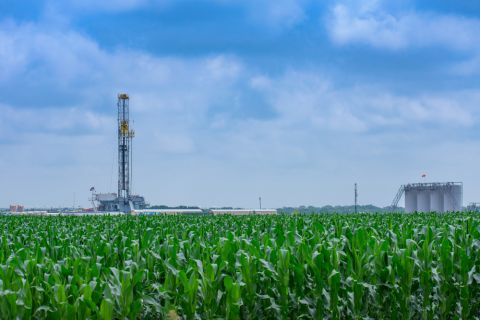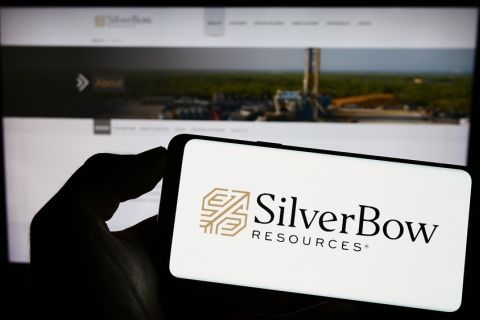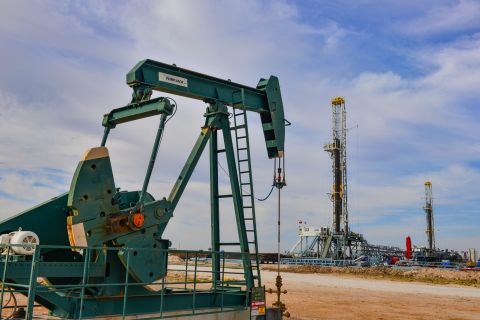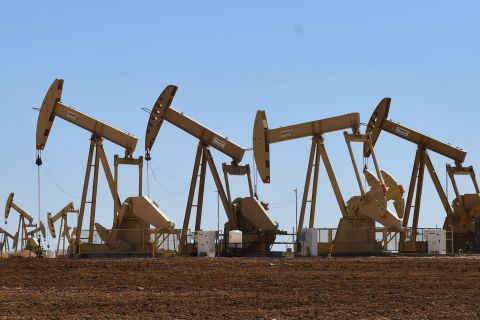Positioning itself as "a leading independent integrated energy company," Amerada Hess Corp. plans to deliver superior financial returns, provide long-term profitable growth and leverage its technical capabilities. The New York major oil company intends to be in the top third among its peers in return on capital employed, its chairman said. "When you employ a lot of capital, you have to make sure it provides good returns," the chairman, John Hess, told investors attending PaineWebber Inc.'s 13th annual energy conference. It was his first public appearance before the financial community outside the company's annual meeting or other Amerada Hess-sponsored events since succeeding his father, Leon Hess, four years ago. In that time, Amerada Hess sold $2 billion of noncore assets, established the Hovensa LLC joint venture with Petroleos de Venezuela SA to improve its refining results, and reduced its annual operating costs by $100 million in 1999. It has made exploration and production the primary vehicle for future income and growth. Refining and marketing, meanwhile, has become a smaller part of the company's overall portfolio, with more emphasis on marketing than refining, the chairman said. E&P accounts for 60% of an $857-million capital budget for 2000 that increased by only $60 million from 1999 total outlays. "That's where the highest returns are. It's a main component in improving returns on capital employed," Hess said. The company intends to emphasize high-impact international and deepwater opportunities upstream. "We're out of onshore E&P in the United States. It withers returns," Hess observed. Exploration will be a focused program, comprised of 35 wells for a total budget of $226 million, down from 1999's level. The company also plans to seek reserve acquisitions this year that offer cost savings and increased volumes in strategic areas. Hess anticipates several opportunities emerging as more majors combine and focus on high-impact opportunities upstream. "There also are some independents that have too much debt," he continued. "Frankly, they don't have the strength to develop their overseas assets as well as someone with our kind of financial base." Hess suggested that overseas joint ventures with national oil companies also represent an E&P opportunity. Some host countries are concerned with what they perceive as an emerging lack of competition and feel threatened by the megamajors, he maintained. "A company like Exxon Mobil Corp. has a market capitalization bigger than many developing countries' gross domestic product. So they look somewhat intimidating. Some countries may feel that a major that size would not be flexible. They might prefer working with someone slightly smaller. That especially has rung true in Brazil, Malaysia and Indonesia," said Hess. Amerada Hess earned $438 million, or $4.85 per share, on nearly $7.04 billion of revenues in 1999 for an 8% return on capital employed. It finished the year with $2.31 billion of debt, representing 43.2% of its total capital. "As we look forward, using an $18 West Texas Intermediate average price, we expect our overall ROCE to be 10% to 12% during the next four years," said John Y. Schreyer, the company's executive vice president and chief financial officer. -Nick Snow
Recommended Reading
Enverus: 1Q Upstream Deals Hit $51B, but Consolidation is Slowing
2024-04-23 - Oil and gas dealmaking continued at a high clip in the first quarter, especially in the Permian Basin. But a thinning list of potential takeout targets, and an invigorated Federal Trade Commission, are chilling the red-hot M&A market.
SilverBow Saga: Investor Urges E&P to Take Kimmeridge Deal
2024-03-21 - Kimmeridge’s proposal to combine Eagle Ford players Kimmeridge Texas Gas (KTG) and SilverBow Resources is gaining support from another large investor.
Mighty Midland Still Beckons Dealmakers
2024-04-05 - The Midland Basin is the center of U.S. oil drilling activity. But only those with the biggest balance sheets can afford to buy in the basin's core, following a historic consolidation trend.
Life on the Edge: Surge of Activity Ignites the Northern Midland Basin
2024-04-03 - Once a company with low outside expectations, Surge Energy is now a premier private producer in one of the world’s top shale plays.
EIA: Permian, Bakken Associated Gas Growth Pressures NatGas Producers
2024-04-18 - Near-record associated gas volumes from U.S. oil basins continue to put pressure on dry gas producers, which are curtailing output and cutting rigs.





